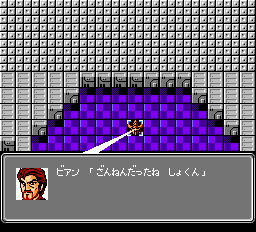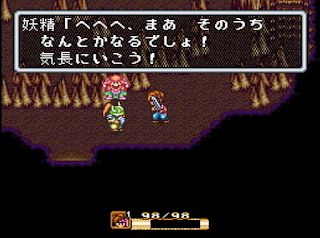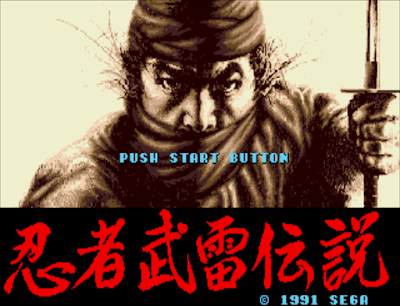The Super Robot Wars posts on this blog are going to be different from the main ones. As I said in my last SRW post, I spent many years playing through about the first 40 games in the series and I don’t really have much desire to do that again. Instead, I’m going to repost what I was posting to the srwg.org message board (and descendants). These posts were almost all lost in various server moves and database crashes, but I have them all on my HD.
As a consequence, these posts will be rougher and less detailed than the normal posts — some of these I wrote over 10 years ago and I don’t have a clear enough memory of the game to do much editing or expansion, although I will add some bracketed [2018:] notes. These were also written for an audience who was familiar with Super Robot Wars.
Anyway, the old stuff starts after the line.
This game is really the beginning of the SRW franchise proper. Despite a large number of differences from the games most people are used to, the basic gameplay and “feel” of the series is still there, albeit in a very primitive form.
The series used in the game are the core UC Gundams (FG, Z, ZZ, CCA, and F91), Mazinger, Great Mazinger, Grendizer, Getter Robo, and Getter Robo G. This is also the first appearance of Cybuster and Granzon. However, from most of these series only the main robots and pilots are controllable player characters. The vast majority of the enemies, particularly the named ones, come from the Gundams.
Gameplaywise, here are at least some of the differences between SRW 2 and later games:
- The game does not differentiate between pilot stats and mech stats. The only stats are power, defense, and speed. They level up as the pilot levels up, and there is no upgrading with money. You cannot switch pilots.
- The numbers are scaled much lower than the later games; your mechs start with as little as 250 HP and at the max level (50) even most of your super robots don’t break 1000 HP. The weapon strengths are also very low. Even the battleships have really low HP.
- Each unit has a maximum of 2 different types of attacks in the NES version (i.e. Cybuster only has Dis Cutter and Cyflash; Gundam F91 only has Beam Rifle and Beam Sword).
- There are no equippable items. You can buy items from shops on the map, but they either increase permanent stats (just by 1), or they stay around and can be used by anyone at any time (i.e. Repair Kits).
- There is no such thing as energy, bullets, or morale. Any weapon could be used as many times as you wanted per map (extremely unbalancing in the case of Cybuster!!) [2018: Actually I found Cybuster pretty weak even with the unlimited MAP attack] Also because of the absence of morale, you can go back to the ship to refuel/repair as often as you want with no penalty.
- You are forced to counterattack if you are attacked. It is possible to dodge the enemy’s attack, but you cannot choose a block or dodge option, and you cannot choose the weapon you counter with.
- The special abilities (such as Newtype and Shield Block) do not exist.
- The seishin are different, and generally less useful. Hirameki(Flash) costs 50 SP, for instance, and there is a 10 SP seishin that only raises your hit value by 10.
- Terrain compatibilities of units do not exist (weapons do have them).
- Repairing does not grant any EXP.
Storywise, the plot is pretty simplistic. Bian Zoldark forms the Divine Crusaders, and it’s everybody vs. DC. There’s no indication that any of the anime plots happened (i.e. the One Year War or anything); it seems that the various robots were created to fight the DC. For the most part, the plot is just a succession of “let’s fight this DC base” or “The DC are attacking here”, with very little character interaction. On the other hand, things from the anime like the Kamille-Jerid rivalry are vaguely referred to.
Stage 1
Talk about back to the basics — this is the first SRW game to have a plot. It’s interesting to see many of the features (some in embryo) that survive to the later games, while there are many differences.
All the text is in hiragana which makes it somewhat hard to read, but not impossible. The opening “prologue” is interesting because unlike many of the other games, it does not mention the events of the actual series. All we’re told is that Bian Zoldark has formed the Divine Crusaders to control the Earth, and gotten many of the Super Robots under his control. There is no mention of the One Year War, of Dr. Hell, or any of the events of the shows that usually are mentioned — it seems that the game is not interested (as the later games are) in setting the events at a particular time in the chronology of the Universal Century or anything like that. I’m also curious to see what the fearsome power from space that Bian Zoldark fears is — in the Alpha series it’s the Aerogaters but obviously that won’t be the same here.
The setup and story of the first stage are similar in that the story isn’t drawn from any of the series, even though Char appears in the stage (it’s not entirely clear who he’s working for; I guess DC).
Unusually for a SRW game, the first stage contains both real robot enemies (Zakus) and super robot enemies (the robot monsters).
The gameplay is recognizably SRW, although the HP are far lower than in most of the games, and there doesn’t seem to be a whole lot of difference between the various attacks the characters can make. Also there are far fewer range attacks (for both enemies and allies) than in the later games.
Char escaped; I wonder if I could have killed him if I had gone after him instead of his friends.
In any case, this stage wasn’t particularly hard; I had to load a save once because I moved Texas Mack too far ahead and he got swarmed. The intermission screen has only save and continue, so I guess there are no upgrades in this game (I read in a FAQ that you can buy things from stores in certain stages; a bit reminiscent of Fire Emblem in that regard).
Stage 2
The layout of the maps reminds me of Fire Emblem for some reason. It has a very big “storm the castle” feel to it even though the goal is the usual “kill all enemies”.
Michiru was really hard to save in this map. You can’t control her at all, you can’t heal her, and she always goes for an enemy and attacks. Also in this game you cannot choose evade or defend — if you are attacked, you automatically counter attack. I finally saved her after many reloads, only to find that you can’t actually recruit her (that was added in the Playstation remake of the game. Boo!)
Jerid, Ramba, and Kakricon made an appearance but it seems like the unique enemy appearances are really just for show in this game because the Titans and Zeon don’t exist, so they’re all just working for the Divine Crusaders. Jerid doesn’t have any special dialogue with Kamille or anything like that.
[2018: I have no notes for stages 3-14. I have a vague memory that I initially started doing this on a blog rather than on srwg.org and maybe those stages were on the blog, but if so that blog is long lost.]
Stage 15 – Fierce fight! Jupitoris
Your forces have to invade the Jupitoris, where Scirocco seems to be plotting against DC on his own. This does seem to draw from the plot of Zeta Gundam, and you can see the first glimpses of the storywriting that’s standard in the later SRW games. Basically the strategy of these missions is the same — bunch your guys up so that they can’t surround you, and you just have to weather the storm of everyone coming at you at once. Then you have to charge the three bosses (Reccoa, Scirocco, Sara). I lost Cybuster and F-91, but overall it wasn’t too bad. The indoor missions tend to be a little challenging because you cannot go into the ship to repair.
Stage 16 – Escape!
One interesting thing about this game is that they do employ a wide variety of mission goals. Here you have to escape the map, avoiding some Last Battalion enemies but fighting the others (the Last Batallion was later reused in OG). The hardest enemy on the map is Radra, a rare non-Gundam unique, who is immune to distance attacks. You can also persuade Cecily with Seabook here but she doesn’t join your team, she just stops attacking your guys.
Stage 17 – Solar Ray Operational
The mission goal here is to destroy 4 solar ray panels in 11 turns. The idea is that you have to fight your way to the solar ray panels against time, but there’s a trick. Duke Freed has a seishin called Teleport that can send a unit to any spot on the map. Just load everyone except Grendizer into the Nel Argama, teleport it over to the solar ray panels, and go nuts. This messes up the enemy AI because enemies will not move or attack until they get attacked or a certain number of turns pass. I was able to get all the enemies near the solar ray panel including Gremi, and not lose anybody in the process. (The Solar Ray is from First Gundam)
Stage 18 – Invasion! Competo
A “defense” mission where you are in the middle and everyone rushes you. It got kind of hairy at the end but I was able to beat them all only losing Puru.
Stage 19 – Death Fight on the Moon
You get a bunch of new weapons for your robots — VSRB for the F-91, Shine Spark for the Getter, etc. This is not a very hard mission because there are so few enemies; Haman is kind of tough but you can conserve all your strength for her. The interesting part of this episode is Puru II. SRW 2 is unique in that you must allow Puru II to kill Puru in order to later get her on your team.
Stage 20 – Deciding Battle! The Granada Base
This is a tough stage. Granzon sticks around until turn 7 and can kill people very easily, and even once he leaves you still have to deal with Haman and the two Geymalks. I lost 4 people on the stage. I doubt it is possible to defeat Shuu; he is immune to range-1 attacks which means only Z Gundam, Nu Gundam, Methuss, and Getter Liger can attack him. Even if you did beat him, it would hardly be worth it.
This is Shuu’s first appearance in SRW. I don’t know what sort of backstory the creators had in mind for Shuu and Masaki at this stage in the series (nothing about their background appears in SRW 2). But Shuu’s personality is intact at this point; his polite speech, his vague taunting, etc. The Granzon only has Black Hole Cannon and Gran Worm Sword at this point.
Here are some screens of Cybuster vs. Granzon, SRW 2 style:
Stage 21 – Stop, time!
This is sort of a dumb stage. The goal is to escape in 15 turns. There’s not really much in the way of challenge — there are only 3 enemies who can’t keep up with your units, so it’s just a matter of moving everyone to the end. Bian does appear in this level at the beginning, here’s what he looks like in SRW 2:
One thing I forgot about Shuu is that he doesn’t have Dark Prison yet as BGM; he just gets the Valsion theme, same as Bian.
Stage 22 – Entering the Atmosphere
This is an odd stage. You have to protect the Ra Kaliam for 20 turns, but all the enemies rush you, so I defeated them all in 6. Also, the AI for the enemies is buggy — if they can’t attack the Ra Kaliam, they won’t do anything except move. So all you have to do is surround the Ra Kaliam, destroy the 4 boss units that can make ranged attacks, and you win.
Time for some suicide runs! The last few battles are “kill the leader” ones so they can (hopefully) all be cheesed.
Stage 23 – Scirocco’s Counterattack
This is Scirocco’s last stage. Teleport the Ra Kaliam with every unit inside, and attack Scirocco — I lost a few units but I won. Although they sort of used the plot point of Scirocco defecting against the evil organization, they didn’t really carry it to the point where you can actually say they were using Zeta Gundam’s storyline. Kamille has no particular relation to Scirocco, and there’s no “insane” sequence.
Stage 24 – Gilgilgan
The Gilgilgan and Mech Gilgilgan showed up in SRW 1; Kouji and Duke indicate that they fought Gilgilgan before, but this cannot be a reference to SRW 1. It may just be that this was part of the DC fight before SRW 1 started. Anyway, Gilgilgan is pretty close to where you start, so I just threw all my guys at Gilgilgan and lost everybody but 2 people. Thankfully money is worthless in this game aside from repairs.
Stage 25 – Last Battalion Again
This stage has tons of difficult enemies and waves of reinforcements, but it falls victim to the Teleport and Suicide strategy again. Ra Kaliam goes to the NW of the map, then I mostly used distancea attacks (because he’s surrounded by other enemies).
Stage 26 – Final Battle at Dawn
The final stage isn’t too bad. I don’t understand why Kyara and Lakan were chosen to be enemies in the final battle; it seems like Haman would have been a better choice.
Next up are Shu and Bian, who start coming at you before you can completely heal up (I just used Love). Here are some Valsion screenshots (the last one is Cross Smasher):
I totally ignored Shu and focused all my attacks on Bian, using several Love seishin to restore HP, and Bian went down fairly easily.
Bian gives his usual speech, and I was a little surprised that he does actually mention Ryune in the original NES version. Maybe they had already come up with some SRW 3 ideas at this time.
Then the concluding scene has a sort of robot encyclopedia with info on each robot. The descriptions of Cybuster and Granzon don’t add anything to the backstory of the characters, unfortunately, but here are some shots:
So that’s it for SRW 2. Overall this is not a very good game. Everything about it is primitive; in particular, the strategic options are so limited that it doesn’t really feel like you have much choice in what you do. Basically it’s just watch all the enemies come towards you en masse, and kill them as fast as you can. Really this is only worth playing for historical value.
[2018: Next up will be Fire Emblem Gaiden.]















































